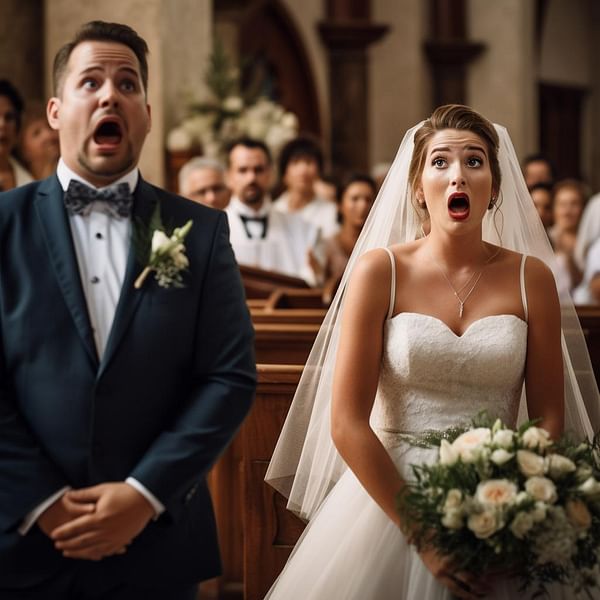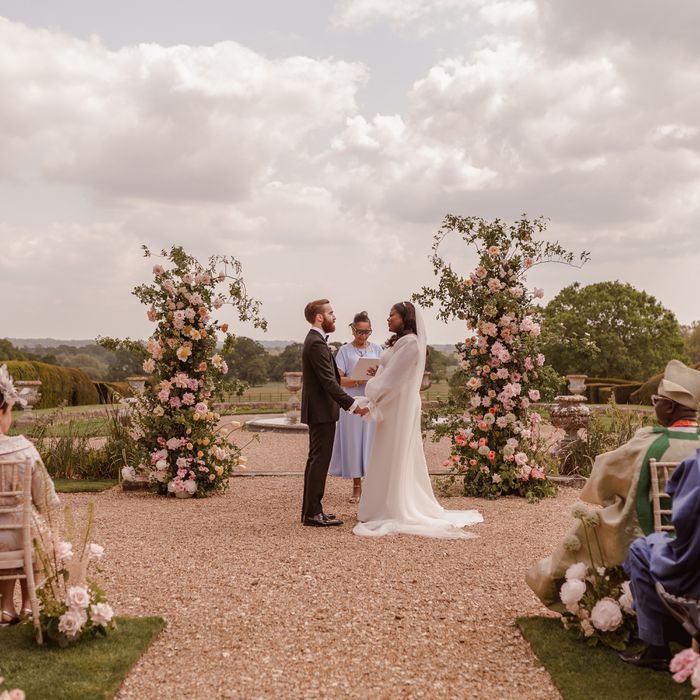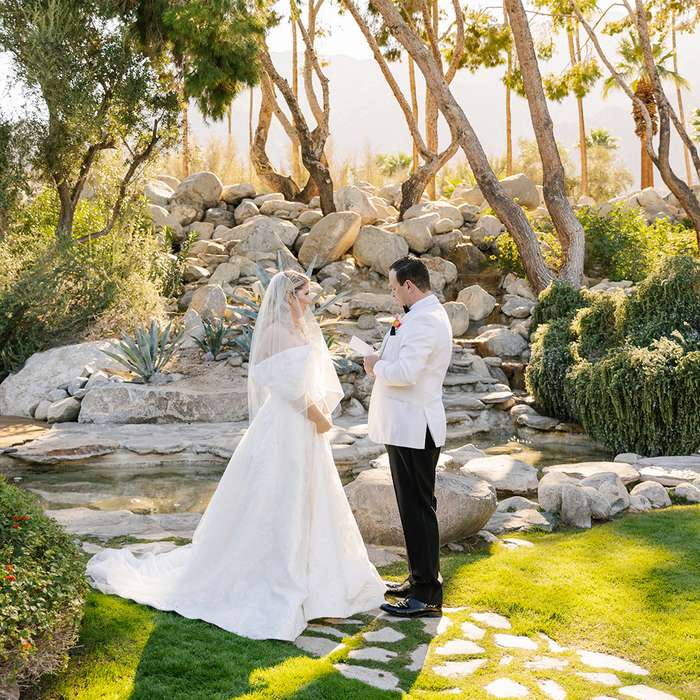I. Introduction

a. Importance of a wedding ceremony
A wedding ceremony is a significant and joyous occasion that marks the union of two individuals in love. It is a celebration of commitment, partnership, and the beginning of a new chapter in life. The ceremony holds deep emotional and cultural significance, serving as a sacred ritual that brings families and communities together to witness and celebrate the love and dedication of the couple.
b. Factors that can impact the length of a wedding ceremony
Several factors can influence the length of a wedding ceremony. These include cultural and religious traditions, personal preferences of the couple, the number of guests, and the chosen venue. The inclusion of readings, rituals, vows, music, and other elements can also affect the duration of the ceremony. It is important for the couple to consider these factors when planning their ceremony to ensure that it aligns with their vision and reflects their values.
II. Traditional Wedding Ceremony Length
a. Overview of traditional wedding ceremony timeline
The length of a traditional wedding ceremony can vary depending on the customs and practices of different cultures and religions. Generally, a traditional ceremony can last anywhere from 30 minutes to an hour, with variations based on the specific traditions and rituals incorporated. The timeline typically includes the processional, welcoming words by the officiant, exchange of vows, exchange of rings, readings or music, and the conclusion with the pronouncement of marriage and the recessional.
b. Common elements that contribute to the length of a traditional wedding ceremony
Several common elements contribute to the duration of a traditional wedding ceremony. The processional, where the bridal party enters, can take several minutes. Additionally, religious or cultural readings, blessings, and rituals can add significant time to the ceremony. Personalized vows, live music, and any other special traditions can also extend the duration. All these elements are important in adding depth and significance to the ceremony, but they should be carefully considered to ensure that the ceremony runs smoothly and holds the attention of the guests.
III. Shortened Wedding Ceremonies
a. Advantages of a shortened wedding ceremony
There are numerous advantages to having a shortened wedding ceremony. For one, it allows you and your partner to focus on what really matters: your love for each other and your commitment to spending your lives together. By keeping the ceremony brief, you can avoid any unnecessary stress or anxiety that may come with a long, drawn-out affair. Additionally, a shorter ceremony can often be more cost-effective, as it may require less time and resources to plan and execute.
b. Ways to shorten a wedding ceremony while maintaining its significance
If you’re considering a shortened wedding ceremony, there are several ways to go about it while still maintaining its significance. One option is to eliminate certain traditional elements, such as readings, musical performances, or multiple vow exchanges. Another approach is to condense the ceremony itself, focusing on the most essential components – the vows, the exchange of rings, and the pronouncement of marriage. You can also consider having a smaller guest list, which can help keep the ceremony shorter and more intimate.
c. Tips for couples who want a shorter wedding ceremony
If you and your partner are interested in having a shorter wedding ceremony, there are a few tips to keep in mind. First, be sure to communicate your wishes with your officiant and any other key participants in the ceremony, such as readers or musicians. This will help ensure that everyone is on the same page and can help you tailor the ceremony accordingly. Additionally, consider the timing of your ceremony – a shorter affair may lend itself well to a daytime wedding or an intimate evening event. Finally, don’t be afraid to think outside the box when it comes to the structure of your ceremony. There are countless ways to make your vows and ring exchange unique and memorable, even in a shorter format.
IV. Extended Wedding Ceremonies
a. Reasons for an extended wedding ceremony
There are several reasons why a couple may choose to have an extended wedding ceremony. For some, it may be a way to honor and incorporate important cultural or religious traditions into their special day. For others, it may be a way to create a more intimate and meaningful experience for themselves and their guests. Whatever the reason, an extended ceremony can provide a deeper and more memorable experience for everyone involved.
b. How to keep guests engaged during a longer ceremony
Keeping guests engaged during a longer ceremony is important to ensure that everyone feels included and connected to the couple. One way to do this is to incorporate interactive elements such as personal vows, readings by loved ones, or symbolic rituals that involve the participation of the guests. Additionally, providing comfortable seating, refreshments, and perhaps even some light entertainment can help to keep everyone feeling relaxed and engaged throughout the ceremony.

c. Incorporating cultural or religious traditions that may lengthen the ceremony
Incorporating cultural or religious traditions into a wedding ceremony can add a beautiful and meaningful dimension to the celebration. Whether it’s a traditional tea ceremony, a handfasting ritual, or a religious prayer or blessing, these elements can add depth and significance to the ceremony. While they may add to the overall length of the ceremony, they can create a richer and more inclusive experience for the couple and their guests.
V. Personalizing the Length of the Wedding Ceremony
a. Tailoring the ceremony to match the couple’s preferences
Every couple is unique, and their wedding ceremony should reflect their individual personalities, values, and desires. Whether the couple prefers a short and sweet ceremony or a more elaborate and extended affair, it’s important to tailor the ceremony to match their preferences. This may involve choosing specific readings, rituals, or symbolic gestures that hold personal significance to the couple.
b. Balancing the desire for a meaningful ceremony with time constraints
While it’s important to create a meaningful and personalized ceremony, it’s also essential to consider time constraints and the comfort of the guests. Finding a balance between the desire for a meaningful ceremony and practical considerations may involve making choices about which elements to include, how to streamline the flow of the ceremony, and how to create a comfortable and enjoyable experience for everyone involved.
c. Choosing the right elements to include based on the desired length of the ceremony
When personalizing the length of the wedding ceremony, it’s important for couples to consider which elements are most meaningful and important to them. Whether it’s exchanging personal vows, including cultural or religious traditions, or incorporating symbolic rituals, choosing the right elements can help to create a ceremony that feels authentic and true to the couple’s love story.
In conclusion, the length of a wedding ceremony is a deeply personal decision that should reflect the values, preferences, and desires of the couple. Whether the couple chooses to have an extended ceremony to honor traditions and create a meaningful experience, or a shorter and more streamlined affair, it’s important to consider how to keep guests engaged, and how to create a ceremony that feels true to the couple’s love story. By tailoring the length of the ceremony to match their preferences and finding a balance between meaningful elements and time constraints, couples can create a wedding ceremony that feels truly unforgettable.

